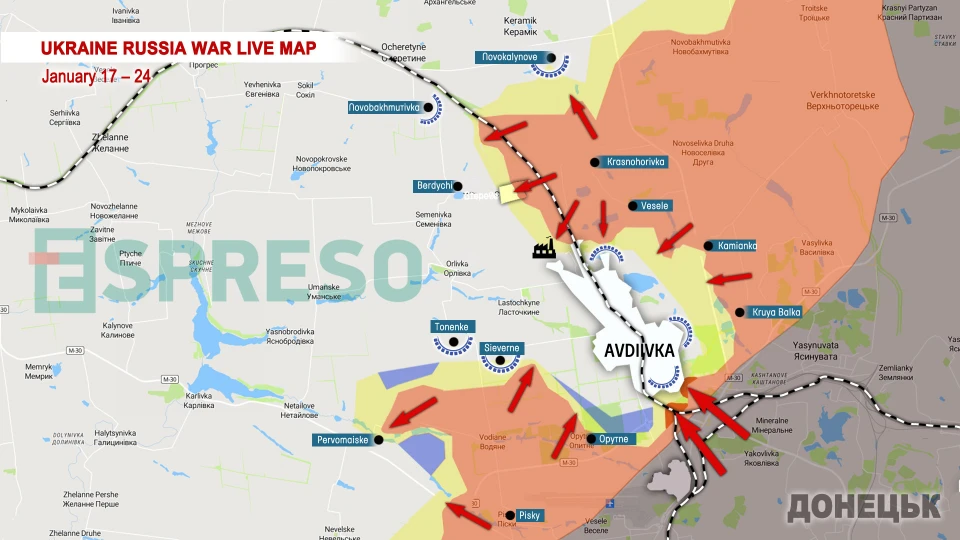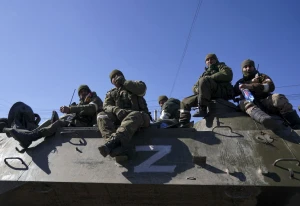
Who shot down Russian Il-76 carrying missiles? Column by Serhiy Zgurets
The Russian military aircraft Il-76 was used to transport anti-aircraft and ballistic missiles to the Belgorod area
About Russian IL-76 downing
I'll start with the story of a Russian Il-76 downing. On January 24, at about 10 o'clock in the Belgorod region near the village of Yablonovo, an Il-76 military transport plane crashed. Local Telegram channels posted a video showing the plane flying down and then exploding on the ground. The blast is quite powerful, and before that, large pieces of debris or parts of the cargo fall out of the plane.
Almost immediately, the Russian Defense Ministry acknowledged the loss of the plane, despite its usual practice of keeping silent and not commenting on such events. Moreover, the so-called Russian MoD quickly announced that the Il-76 was carrying 65 Ukrainian prisoners transported to Belgorod for exchange. Subsequently, it also claimed that an anti-aircraft missile system of the Ukrainian Armed Forces had shot down the plane somewhere near the village of Liptsi, Kharkiv region. And then the Russians published a list of prisoners who were allegedly on board the plane. But the checks showed that at least 17 Ukrainian POWs had returned to Ukraine during earlier swaps.
At the same time, no remains of bodies were shown at the crash site. As for the reaction from the Ukrainian side, in my opinion, it was too slow. In particular, at first, the Ukrainian Coordination Headquarters for the Treatment of War Prisoners officially reported that the enemy was actively conducting an information special operation to destabilize Ukrainian society. And then, finally, there was a statement from the Ukrainian General Staff, which claimed that the Armed Forces were taking all measures to protect Ukraine and Ukrainians, and that the Russian troops had launched 19 missile attacks on the Kharkiv region in the last week alone. I would like to remind you that the Russian military often uses S-300, S-400, or Iskander surface-to-air missile systems.
In this context, Ukrainian General Staff reported that the intensification of Ukrainian cities' shelling was directly correlated with the increase in the number of flights to the Belgorod airfield. And it was the Il-76 military transport aircraft that was used to transport anti-aircraft and ballistic missiles to the Belgorod area. Therefore, to reduce this threat, the Ukrainian Armed Forces not only control the airspace but also control the logistics of their supply using transport aircraft.
Then there was a final decision that the Ukrainian Armed Forces would continue to destroy the means of supply, control of airspace and the destruction of the terrorist threat, including on the Belgorod and Kharkiv directions. In other words, one could understand that the General Staff was answering the question of who shot down the Il-76 carrying the missiles and that Russian aircraft that pose a threat to Ukraine will continue to be destroyed. So far, this story looks exactly like this.
However, I do not exclude that there will be more details later because recently the Defense Intelligence claimed that the POW swap that was supposed to take place yesterday did not happen. And now we do not have reliable information, according to the Main Intelligence Directorate, about who exactly was on board the Il-76. Based on this, they stated, we can talk about planned and deliberate actions of the Russian Federation to destabilize the situation in Ukraine and weaken international support for Ukraine. This is the conclusion of the Main Intelligence Directorate. Let's wait for the continuation of this story.
Situation at front - Avdiivka direction
And then we talk about what is happening on the contact line, where the entire front line is holding due to Ukrainian soldiers' courage. First of all, let's look at the Avdiivka direction, where a significant number of attacks from different directions took place yesterday.
Yegor Firsov, a Ukrainian Armed Forces serviceman, said the situation is difficult in the Avdiivka direction. "The enemy is using a lot of guided bombs and FABs, aerial bombs that Russians use every day. This is a nightmare for a soldier, because if a bomb strikes nearby and a soldier is contused, he seems to be fine, but it is very difficult for him to continue fighting. Some of the fighting takes place in the so-called Dachas (dacha - summer cottage). My comrades from other units have been pushing the enemy hard, recapturing some of their positions, but the Russian troops are using the cottage area, which is equipped with cellars and basements. The enemy is hiding there. Our FPV drones fly into the house where the occupants are hiding, but it is very difficult to break through the basement.”

The serviceman noted that there is a large concentration of Russian electronic warfare. The guys know how to bypass it, but this creates certain obstacles to the UAVs' operation. The Russian troops have also begun to actively use night drones, which are hindering the advance. And it is very difficult to hide from them, so we need to equip vehicles and equipment with electronic warfare devices. This is currently one of the priority areas to protect ourselves from Russian FPV drones.
New details of the Russian missile attack on January 23
And then about realities related to missile attacks on Ukraine. We're going to bring in Oleksandr Ruvin, Director of Kyiv Scientific Research Institute of Forensic Expertise of Ukraine's Justice Ministry, and ask him about his analysis of the Russian missile attack that took place on January 23.
Oleksandr Ruvin said that experts from the Kyiv Scientific Research Institute of Forensic Expertise of the Ukrainian Justice Ministry were at all the sites where weapons were used on January 23 in Kyiv and Kyiv region, and did not find any new specific missiles. These were Kh-101 and Kh-55 cruise missiles that flew from the Zhytomyr direction and then changed direction to Kyiv. At certain locations, objects were found that clearly indicate that not only cruise missiles were used, but also missiles flying along a ballistic trajectory, these are 48 missiles used by the Russian forces in S-400 systems. These missiles are supposed to be used for air defense, but the Russian Federation has modified them and now they have a surface-to-surface capability. The relevant objects have been found, so we can accurately identify them as S-400 missiles.
The Director of the Kyiv Scientific Research Institute of Forensic Expertise added that regarding the use of 48 missiles from the S-400 system, these missiles are not designed for precise targeting because they cover large territories. Therefore, according to experts, if these missiles were employed by the adversary, considering their inaccuracy, the strikes were likely aimed at causing material damage and casualties among the civilian population.
Ruvin noted regarding North Korean missiles that there are remnants of missiles that, up to a certain point, were not used by the Russian army. These objects exhibit specific characteristics that allow us to conclude that the missiles were not manufactured in Russia. In the near future, more information will be provided, but for now, it's mentioned that these missiles were used to launch attacks on both Kyiv and Kharkiv. Currently, investigations are ongoing regarding the composition of metals and other components.
The scientist revealed that the P-35 missiles were used by the Russian army for the first time on Ukrainian territory. Debris from these missiles has been collected at the impact sites. Currently, examinations and identification processes are underway. It is known that the P-35 is an old Soviet missile, lacking precision and not even hitting within a range of 1.5-2 km. However, it is a large and powerful missile. Presently, efforts are being made to establish all the characteristics of these missiles to prepare relevant evidence for submission to the International Criminal Court through the pre-trial investigation bodies. Based on the available debris, it can be confirmed that these are remnants of P-35 missiles.
- News












































